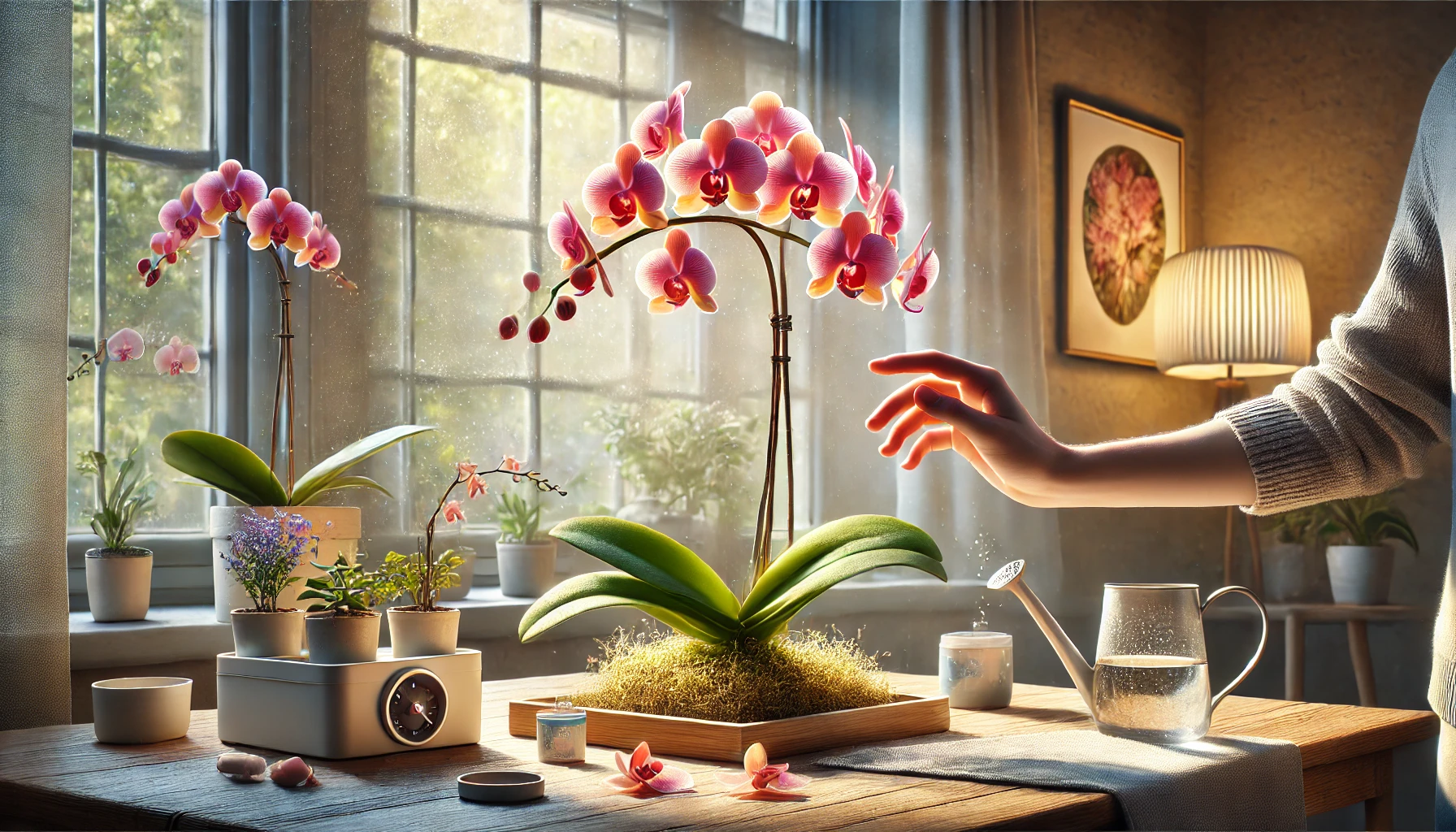Orchid blooms are stunning and long-lasting compared to many other flowers, but with the right care, you can make them last even longer. Some orchids, like Phalaenopsis, can keep their flowers for up to three months, while others bloom multiple times a year. Knowing how to provide the best environment for your orchid will help you enjoy its blossoms for as long as possible.
🌸 How Long Do Orchid Blooms Last?
The lifespan of orchid flowers varies depending on the species, environment, and care.
✔ Phalaenopsis (Moth Orchid): Blooms last 6 to 12 weeks and can rebloom on the same spike.
✔ Dendrobium: Flowers last 4 to 6 weeks, and spikes often rebloom the following year.
✔ Cattleya: Blooms last 2 to 4 weeks, usually once or twice a year.
✔ Oncidium (Dancing Lady Orchid): Flowers last 1 to 2 months, with many blossoms per spike.
✔ Vanda: Blooms last 6 to 8 weeks, with potential reblooming multiple times a year.
❌ Common Reasons Orchid Blooms Fade Too Quickly:
- Sudden changes in temperature
- Overwatering or underwatering
- Low humidity levels
- Lack of nutrients
- Exposure to direct sunlight or heat sources
💡 With proper care, you can help your orchid blooms last as long as possible and even encourage new ones!
🌞 Provide the Right Light Conditions
Orchids thrive in bright, indirect sunlight. If your orchid receives too much direct sun, the blooms may fade or wilt prematurely.
✔ Place orchids near an east or north-facing window for gentle light.
✔ Use a sheer curtain to filter strong sunlight from south or west-facing windows.
✔ If natural light is limited, use a full-spectrum LED grow light for at least 10–12 hours a day.
✔ Rotate the orchid slightly every few days to ensure even light exposure.
❌ Avoid placing orchids in direct sunlight, as this can cause sunburn and wilting flowers.
🌡 Maintain the Ideal Temperature and Humidity
Orchids are sensitive to temperature fluctuations, which can cause buds and flowers to drop prematurely.
✔ Keep orchids in temperatures between 65–75°F (18–24°C) during the day and 55–65°F (13–18°C) at night.
✔ Avoid placing orchids near heaters, air conditioners, or cold drafts.
✔ Maintain humidity levels between 50–70% using a humidity tray or room humidifier.
✔ If your home is too dry, mist the air around the orchid (not directly on the flowers) to prevent dehydration.
❌ Low humidity can cause flowers to dry out and drop early.
💧 Watering Correctly to Prevent Bloom Loss
Overwatering or underwatering can stress the orchid, leading to wilted or falling blooms. Orchids should be watered based on the condition of their roots and potting medium rather than a strict schedule.
✔ Water once a week in cooler months and twice a week in warmer months.
✔ Use room-temperature water and let excess moisture drain completely.
✔ Water in the morning so any excess moisture evaporates by evening.
✔ If using bark as a potting mix, let the roots turn silvery-white before watering again.
❌ Do not let the orchid sit in standing water, as this can cause root rot and stress the plant.
🍃 Fertilizing for Longer-Lasting Blooms
Orchids need nutrients to keep their flowers strong and vibrant. Using the right fertilizer at the right time can prolong blooming and encourage future flowers.
✔ Use a balanced orchid fertilizer (20-20-20) at half strength every two weeks.
✔ Switch to a bloom-boosting fertilizer (10-30-20) when the orchid starts forming flower spikes.
✔ Stop fertilizing once flowers have fully opened, as excessive nutrients can shorten bloom time.
❌ Avoid overfertilizing, as this can lead to weak flowers and excessive leaf growth instead of blooms.
✂️ Pruning and Trimming for Continuous Blooms
Knowing when and how to trim your orchid’s flower spike can help it rebloom faster.
✔ If the flower spike is still green, trim it just above a node (the small bump on the spike) to encourage new growth.
✔ If the flower spike turns brown and dries out, trim it at the base, as it will no longer produce flowers.
✔ For Phalaenopsis orchids, leaving part of the spike intact can sometimes trigger a second round of blooming.
❌ Do not trim an active flower spike, as this will stop new blooms from forming.
🚫 Avoiding Common Mistakes That Shorten Bloom Lifespan
❌ Moving the orchid too much: Sudden changes in light and temperature can cause bud blast, where flower buds drop before blooming. Keep the plant in a stable location.
❌ Placing orchids near fruit: Ripening fruit releases ethylene gas, which speeds up flower aging and causes blooms to wilt faster. Keep orchids away from bananas, apples, and other ripening fruits.
❌ Using cold or chlorinated water: Cold water shocks the roots, and chlorine buildup can stress the plant. Use filtered or rainwater at room temperature.
❌ Touching the flowers too often: Frequent handling can cause the delicate petals to bruise and wilt.
🌿 Encouraging Future Blooms After Flowers Fade
Even after an orchid’s flowers fall, proper care can encourage reblooming. Some orchids, like Phalaenopsis, can rebloom on the same spike, while others grow new spikes yearly.
✔ Continue providing bright, indirect light and a stable environment.
✔ Maintain a temperature drop at night (by about 10°F or 5°C) to stimulate flower production.
✔ Resume fertilizing with a balanced formula once new growth appears.
✔ If no new spikes appear after several months, consider repotting the orchid to refresh the potting medium.
🌸 Final Tips for Maximizing Orchid Blooms
✔ Keep orchids in a stable environment with bright, indirect light.
✔ Maintain humidity at 50–70% and avoid extreme temperature shifts.
✔ Water carefully, letting roots dry slightly between waterings.
✔ Use the right bloom-boosting fertilizer before and during flower formation.
✔ Trim flower spikes properly to encourage reblooming.
With the right care, your orchid’s flowers can last for weeks or even months, bringing beauty and elegance to your home! 🌿✨
